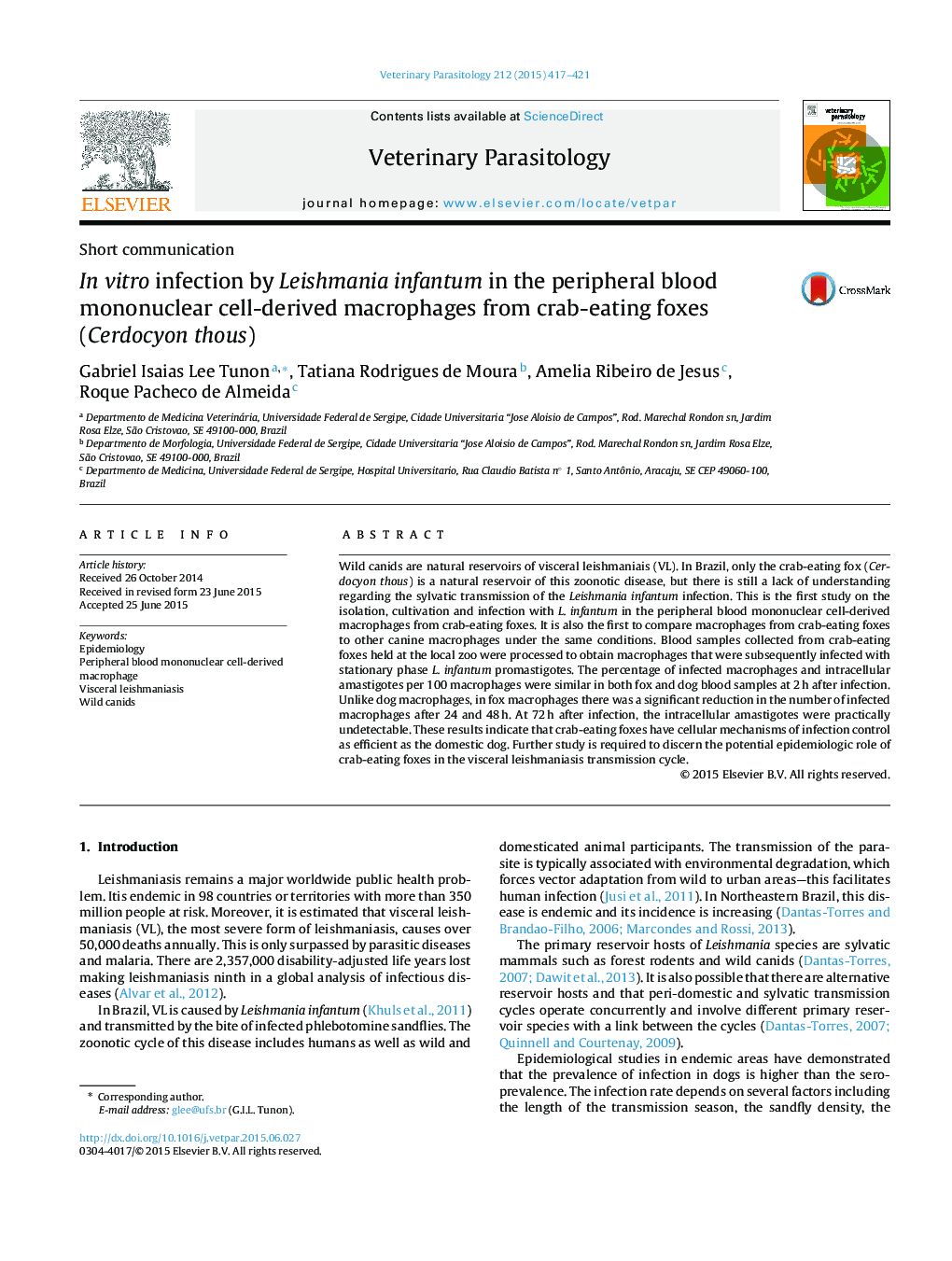| Article ID | Journal | Published Year | Pages | File Type |
|---|---|---|---|---|
| 5802386 | Veterinary Parasitology | 2015 | 5 Pages |
â¢First report on the isolation and cultivation of crab-eating foxes macrophages.â¢We address the knowledge gaps about macrophages derived from monocytes of fox.â¢We compared Leishmania infection of dog and crab-eating fox macrophages.â¢Crab-eating foxes have mechanisms of infection control as efficient as the domestic dog.
Wild canids are natural reservoirs of visceral leishmaniais (VL). In Brazil, only the crab-eating fox (Cerdocyon thous) is a natural reservoir of this zoonotic disease, but there is still a lack of understanding regarding the sylvatic transmission of the Leishmania infantum infection. This is the first study on the isolation, cultivation and infection with L. infantum in the peripheral blood mononuclear cell-derived macrophages from crab-eating foxes. It is also the first to compare macrophages from crab-eating foxes to other canine macrophages under the same conditions. Blood samples collected from crab-eating foxes held at the local zoo were processed to obtain macrophages that were subsequently infected with stationary phase L. infantum promastigotes. The percentage of infected macrophages and intracellular amastigotes per 100 macrophages were similar in both fox and dog blood samples at 2Â h after infection. Unlike dog macrophages, in fox macrophages there was a significant reduction in the number of infected macrophages after 24 and 48Â h. At 72Â h after infection, the intracellular amastigotes were practically undetectable. These results indicate that crab-eating foxes have cellular mechanisms of infection control as efficient as the domestic dog. Further study is required to discern the potential epidemiologic role of crab-eating foxes in the visceral leishmaniasis transmission cycle.
